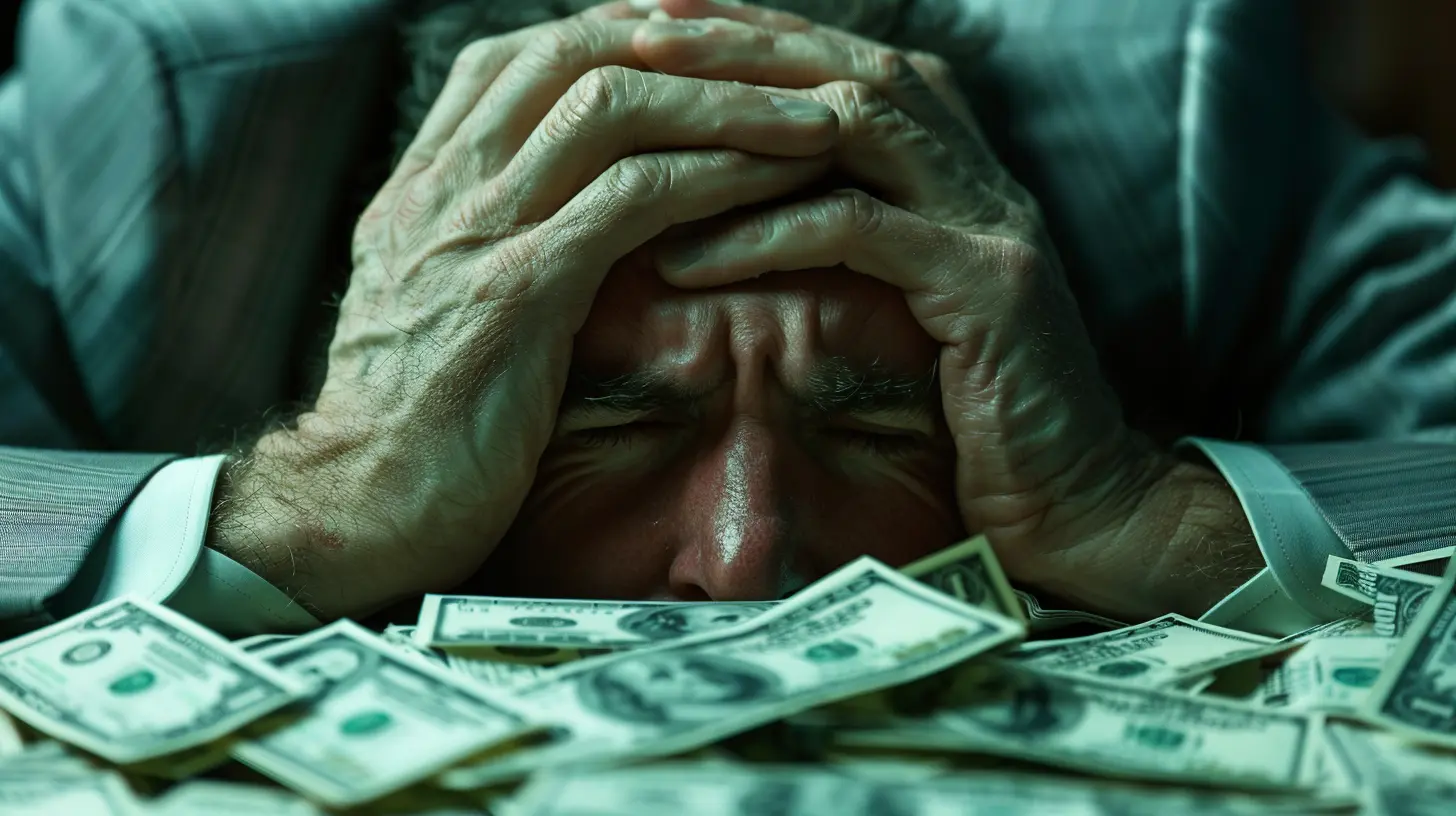How Economic Stimulus Packages Work During Financial Meltdowns
7 June 2025
Let’s face it—financial meltdowns are scary. They shake markets, drain savings, spike unemployment, and send economies spiraling. But whenever things start going downhill, one term you’ll often hear over and over is “economic stimulus package.” Sounds fancy, right? But what does it really mean? And how exactly does it help when everything seems to be falling apart?
In this article, we’re diving deep into the world of economic stimulus packages—unpacking what they are, why governments use them during financial crises, and what impact they have on the economy, businesses, and regular folks like you and me. Don't worry, we’ll keep it simple, straight to the point, and maybe even a bit fun.
What Exactly Is an Economic Stimulus Package?
Before we go further, let’s break it down. Think of the economy as a car. When the car breaks down or slows to a crawl (hello recessions), you need a jumpstart. That’s what an economic stimulus package is—it’s the government’s way of jumpstarting the economy.So, in basic terms, an economic stimulus package is a set of measures—like tax cuts, government spending, or direct payments—designed to increase economic activity during tough times. It pulls the economy out of the ditch and gets it moving again.
Why Are Stimulus Packages Needed During Financial Meltdowns?
Financial meltdowns bring a lot of chaos. People lose jobs, businesses collapse, stock markets tumble, and consumer confidence takes a nosedive. When people and businesses are scared and uncertain, they stop spending and investing—which only worsens the crash.That’s where stimulus packages come in. They act as a cushion, softening the blow and helping the economy recover faster. Without them, recoveries could take much longer, causing more pain for everyone involved.
Think of it like a safety net. When people fall due to economic hardship, the stimulus package helps catch them—offering support until they can get back on their feet.
Types of Stimulus Measures: What's in the Package?
Not all stimulus packages are created equal. Depending on the severity of the crisis, different tools can be used. Let’s break down some of the common ingredients.1. Direct Cash Payments
You’ve probably heard of stimulus checks—those direct payments sent to individuals and families. They're the most visible part of a package and aim to boost consumer spending.For example, during the COVID-19 pandemic, governments around the world issued such checks to help people keep up with bills, rent, and groceries. When people spend those checks, it circulates money through the economy like fuel in an engine.
2. Tax Cuts and Tax Credits
Lowering taxes means people keep more of their income—and ideally spend it. Tax credits can also encourage specific behavior, such as investing in a business or hiring new employees.This works like giving someone a coupon to shop more—it’s an incentive wrapped in cash savings.
3. Increased Government Spending
Governments often invest directly in infrastructure, public services, and healthcare during crises. These investments create jobs, boost demand, and stimulate different sectors.It’s like planting seeds in a garden—you won’t see the results overnight, but those investments grow jobs and incomes over time.
4. Unemployment Benefits and Social Support
When people lose their jobs, the government steps in with unemployment benefits, food assistance, and rental support. This safety net ensures people can survive tough times without completely going under.And guess what? These benefits also help maintain consumer spending. If people can pay rent or buy groceries, businesses survive, and the cycle continues.
5. Business Loans and Bailouts
Sometimes, industries are hit so hard that they need direct lifelines. Think airlines, auto manufacturers, or banks. Governments may offer low-interest loans, grants, or even temporary ownership to stabilize them.Now, this part can be controversial (yep, remember the 2008 bailouts?), but in some cases, it’s necessary to avoid total collapse of critical sectors.
How Do Stimulus Packages Actually Work?
Let’s get a little nerdy—but just a little. Economic stimulus packages work by boosting demand. When people have more money or feel more secure, they spend. That increase in demand encourages businesses to hire, produce, and expand.Here’s a simple chain reaction:
1. Government injects money →
2. People spend more →
3. Demand for goods/services rises →
4. Businesses grow and hire →
5. More jobs = more income →
6. The economy recovers.
It’s like watering a dry plant—the right amount of water at the right time helps it spring back to life.
Monetary vs. Fiscal Stimulus: What's the Difference?
You’ll often hear two types of economic interventions: fiscal policy and monetary policy.Fiscal Policy
That's the stuff we've mostly talked about: government spending, tax cuts, and direct payments. It’s controlled by lawmakers and designed to move money directly into people’s hands.Monetary Policy
This is the domain of central banks, like the Federal Reserve or the European Central Bank. They tweak interest rates and manage the money supply. For example, lowering interest rates makes borrowing cheaper, encouraging businesses and people to take loans and invest.Think of fiscal policy as the wallet and monetary policy as the credit card. One gives you money directly while the other makes it easier to borrow it.
Real-World Examples of Stimulus Packages
Let’s put theory into practice. Here are some real-world examples where stimulus packages played a major role.1. The Great Recession (2008–2009) – USA
Following the collapse of Lehman Brothers, the U.S. economy tanked. In response, the government passed the American Recovery and Reinvestment Act (ARRA) in 2009—worth $831 billion. It included tax cuts, unemployment benefits, and infrastructure investments.Did it work? Critics and fans still debate it, but most economists agree it helped prevent an even deeper recession.
2. COVID-19 Pandemic Stimulus – Globally
The global response to COVID-19 was historic. Countries rolled out massive stimulus packages to protect their economies. In the U.S., several packages (like the CARES Act and American Rescue Plan) were passed, totaling trillions of dollars.The result? While the pandemic hurt many sectors, speedy stimulus helped keep millions of people afloat and prevented a complete economic freefall.
Do Stimulus Packages Work Every Time?
That’s a great question. Stimulus packages are effective tools, but they’re not magic bullets. Sometimes they work better than others, depending on how severe the crisis is, how quickly they’re implemented, and what’s included.Here are some factors that affect success:
- Timing: The faster the response, the better the outcome.
- Size: Too small, and it won’t make a difference. Too big, and you might inflate the economy later.
- Targeting: Supporting low- and middle-income households often leads to more spending than helping wealthy individuals.
- Implementation: Red tape can slow down delivery, reducing the impact when it's needed most.
And yes, sometimes stimulus can lead to increased national debt or inflation if not handled properly. It's a delicate balance—like walking a tightrope while juggling fireballs.
The Criticism: Is Stimulus Spending Just a Temporary Fix?
Some critics argue that stimulus packages are like putting a band-aid on a deep wound. They say it doesn’t address the root causes of economic problems, like poor regulation, inequality, or long-term inefficiencies.Others worry about the long-term effects, such as:
- National Debt: Huge packages add to public debt. Who pays for that down the line?
- Inflation: Injecting too much money can push prices up, eating into the value of savings.
- Moral Hazard: Bailing out businesses might encourage risky behavior—because they assume the government will always step in.
These are valid concerns, and each package needs to be carefully crafted to avoid unintended consequences.
Final Thoughts: Stimulus Packages in a Nutshell
When financial meltdowns strike, economic stimulus packages are like emergency medical kits for the economy. They’re not perfect. They can’t fix everything. But when done right, they can ease the pain, speed up recovery, and prevent a total collapse.They help everyday people pay rent, keep businesses open, and stimulate future growth. So, the next time you hear politicians arguing about stimulus bills or see headlines about “trillions being spent,” you’ll know what it all means—and why it matters.
And remember, just like in real life, recovery takes time. But a good stimulus package? It gives the economy a running start.
all images in this post were generated using AI tools
Category:
Financial CrisisAuthor:

Uther Graham
Discussion
rate this article
3 comments
Peter Sanchez
Economic stimulus packages aim to boost demand and stabilize markets during financial downturns by increasing government spending and cutting taxes, ultimately supporting economic recovery and growth.
June 16, 2025 at 11:40 AM

Uther Graham
Thank you for your insightful comment! You've captured the essence of economic stimulus packages perfectly—boosting demand and aiding recovery during downturns.
Solaria McKeever
Great article! Your insights on the mechanics of economic stimulus packages during financial crises are both informative and timely. It’s essential to understand these tools to navigate challenging economic landscapes effectively. Thank you for sharing!
June 15, 2025 at 4:57 AM

Uther Graham
Thank you for your thoughtful comment! I'm glad you found the insights helpful.
Scarlett McGill
In times of crisis, economic stimulus packages serve as lifelines, igniting hope and recovery. They empower businesses, uplift communities, and reignite the economy’s engine, proving that resilience and innovation can triumph over adversity.
June 11, 2025 at 2:44 AM

Uther Graham
Thank you for your thoughtful comment! Indeed, economic stimulus packages play a crucial role in fostering recovery and resilience during crises.



